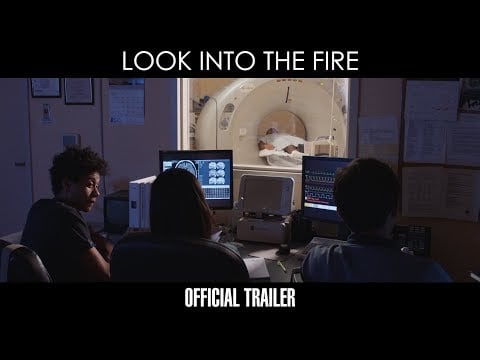“Look Into The Fire” dives into what happens when we take neuroscience too far and see into the thoughts of someone else to prove their innocence.
Could those thoughts be found as legitimate proof or be dismissed as a combination of dreams and fabrications? Clearly each person has a recollection of events in the past, but what part of those memories show the actual truth of what happened?
It’s all from our perspective and our perception of what happened. The film’s main premise tackles how we remember the events of our past.
The film centers on Adam (Artie Shase) who is essentially given a call to action by his professor (Gregg Henry). Adam must push the boundaries of neuroscience to make a breakthrough that will propel the field toward another discovery.
The grand idea he pitches to his team is that it really is possible to see into someone’s mind, but it will take a series of experiments to prove it. However, things go awry, and Adam must put himself into the experiment where he unlocks a horrific memory from his past that he tries to reconcile with what he knows to be true.
This idea had been kicking around my brain for many years before I decided to write the script back in 2014. The concept became clear when I was searching for inspiration from films like “Shutter Island” and “Flatliners.” The movie needed to deal with perception from the point of view of the main character.
From that point, the writing of the first draft was done in a matter of weeks.
The journey of completing a small indie film like “Look Into The Fire” was wrought with many delays, false starts and a learning process for everyone. Once I found my producing partners in Jackie Dallas (who plays Samantha in the film), Eduardo Castrillo, & Bo! Campbell, the production was full speed ahead.
We shot “Fire” in 15 days on a modest budget in late 2017.
RELATED: SEVEN WAYS INDIE FILMMAKERS CAN DRAW A CROWD
This would be my biggest project to date. With the film in the can, there were post-production delays that prolonged the film’s completion. Then COVID-19 hit, further extending the post-production process.
The team was willing to push ahead despite delays and had figured out how to work through the huge limitation of the world shutting down. They came through with the final pieces needed to complete the film, and it was released this year on Prime Video, Tubi and other streaming platforms.
No one could have predicted how much more relevant the film would be now than when it was conceived.
Technological advances that promise humanity’s ability to turn brain waves into actual video or other techniques that could translate brain signals for medical purposes are becoming a widely-accepted reality. With other technologies like augmented reality, virtual reality and even tools being developed by AI software, the film asks these questions of its audience:
Can what you see be trusted? Can memories be altered? Who is to say that society won’t find some ethical concerns about the private thoughts of citizens being recorded in the near future?
Tim Morrill is a San Francisco Bay Area based writer-director with a focus on character-driven narrative feature and short films.
The post How ‘Look Into the Fire’ Comments on Our Perceptions of Truth first appeared on Hollywood in Toto.
The post How ‘Look Into the Fire’ Comments on Our Perceptions of Truth appeared first on Hollywood in Toto.
